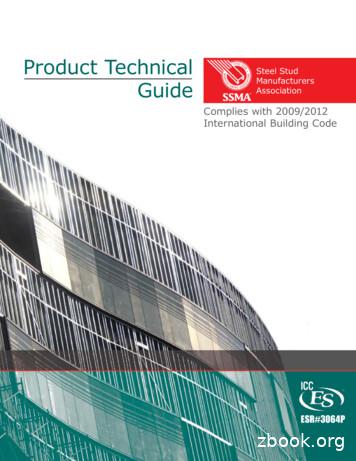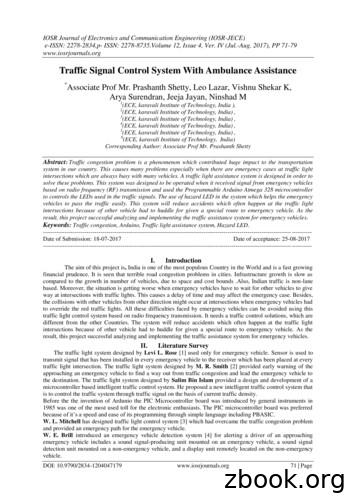7 Calculation Of Traffic Load
Careful flight planning ensures that sufficientfuel is carried for a particular flight. This fuelload, together with the aircraft limitationslisted below, will determine the revenueearning portion of the Traffic Load. TrafficLoad is the total mass of passengers, baggageand cargo, including any non-revenue load.After the fuel required has been decided fora particular flight the Traffic Load may becalculated, taking into account the followingaircraft structural limitations:Dry Operating Mass (DOM)Dry Operating Mass is the total mass ofthe aeroplane ready for a specific type ofoperation excluding all usable fuel andtraffic load. This mass includes: Crew and baggage Catering and removable passengerservice equipment Potable (drinking) water andlavatory chemicalsMaximum Zero Fuel Mass (MZFM)Maximum Zero Fuel Mass is the maximumpermissible mass of an aeroplane withno usable fuel. The MZFM is a structurallimit based on the bending moments ofthe wing root.mass and balance7 Calculation of Traffic LoadMaximum Structural Take-Off Mass(MSTOM)Maximum Structural Take-Off Mass is themaximum permissible total aeroplane massat the start of the take-off run.Maximum Structural Landing Mass (MLSM)Maximum Structural Landing Mass is themaximum permissible total aeroplane massupon landing under normal circumstances.The DOM will vary as the role of the aircraftvaries. For instance, the DOM for a freighttask is considerably less than that for thesame airframe fitted out to carry a maximumpassenger load.All extra weight above the MZFM mustcomprise fuel only. The added fuel, whichis invariably carried in the wing increases itsstiffness and reduces its bending and torsion(twisting). Therefore the MZFM can, in manyinstances, determine the overall Traffic Load,particularly on sectors that require a smallfuel uplift; the reduced fuel requirementcannot automatically be substituted withextra traffic load. Thus:MAXIMUM STRUCTURALTRAFFIC LOAD MZFM - DOMCalculation of Traffic Load7-1
mass and balanceRegulated Take-off Mass (RTOM)This is defined as the TOM which isregulated by accelerated stop distance, takeoff climb requirements, obstacle clearancerequirements, enroute obstacle and landingmass requirements.Regulated Landing Mass (RLAM)This is defined as the Landing massregulated by limitaitons of runway in useand landing and climb requirements.Maximum Take-off Mass (MTOM) andMinimum Landing Mass (MLM)MTOM and MLM are obvious limitations onthe Traffic Load and under normal operatingconditions they must not be exceeded.MTOM comprises the DOM, route fuel atstart of the take-off run and Traffic Load.The MLM comprises the DOM, thefuel remaining at touchdown and theTraffic Load.The three limitations, MZFM, MTOM andMLM must be considered separately in orderto determine the maximum Traffic Load.Example 1Calculate the maximum Traffic Load given:MTOMMLMDOMMZFMFuel at Take-OffEstimated landing fuel7-2Calculation of Traffic Load195 000 kg142 000 kg115 000 kg137 000 kg51 444 kg6200 kgAnswerAt MTOM the traffic load available will be:MTOM - DOM - Total fuel 195 000 - 115 000 - 51 444 28 556 kgAt MLM the traffic load available will be:MLM - DOM - Landing fuel 142 000 - 115 000 - 6200 20 800 kgAt MZFM the traffic load available will be:MZFM - DOM 137 000 - 115 000 22 000 kgThe limiting traffic load is the lowest of thethree figures i.e. 20 800 kg.The above calculations can be tabulatedas shown in table MB 7.1.MTOM limitedtraffic loadMLM limitedtraffic loadMZFM limitedtraffic loadMTOM195000 kgMLM142000 kgMZFM137000 kgDOM115000 kgDOM115000 kgDOM115000 kgTrip fuel45244 kgLanding fuel6200 kgLanding fuel6200 kgTraffic load28556 kgTraffic load20800 kgTraffic load22000 kgTable MB 7.1 Traffic load calculations - example 1
A flight is to be made from Manchester toHanover and return. No fuel is available atHanover. Given the following informationcalculate the maximum Traffic Load for eachleg and the Take-Off Mass at Manchester.MTOM Manchester136 000 kgMTOM Hanover142 000 kgMLM Manchester92 000 kgMLM Hanover92 000 kgDOM56 000 kgMZFM89 000 kgSector distance580 NMFuel Consumption5500 kg/hrTAS420 ktWind component to Hanover 35 ktWind component to Manchester-43 ktDescent fuel1300 kgFinal Reserve and Alternate fuel4700 kgAnswerFirst work out the fuel burn for each sector:Groundspeed outbound455 ktTime outbound1.275 hrsSector fuel outbound8313 kg(7013 1300)Groundspeed home377 ktTime home1.538 hrsSector fuel home9759 kg(8459 1300) Total fuel required at departurefrom Manchester:Fuel for both sectors reserve fuel8313 9759 4700 22 772 kgNow work out maximum Traffic Load forboth sectors.Therefore:Maximum Traffic Load that can be carriedfrom Manchester to Hanover is 21 541 kgMaximum Traffic Load that can be carriedfrom Hanover to Manchester is 31 300 kgmass and balanceExample 2Take-off weight at Manchester DOM Fuel Traffic Load 56 000 22 772 21 541 100 313 kgThe above calculations can be tabulated asshown in table MB 7.2 and table MB 7.3.MTOM limitedtraffic loadMLM limitedtraffic loadMZFM limitedtraffic loadMTOM136000 kgMLM92000 kgMZFM89000 kgDOM56000 kgDOM56000 kgDOM56000 kgTrip fuel8313 kgRetn trip fuel9759 kgRetn trip fuel9759 kgReserve fuel4700 kgReserve fuel4700 kgTraffic load57228 kgTraffic load21541 kgTraffic load33000 kgTable MB 7.2 Traffic load calculations from ManchesterMTOM limitedtraffic loadMLM limitedtraffic loadMZFM limitedtraffic loadMTOM142000 kgMLM92000 kgMZFM89000 kgDOM56000 kgDOM56000 kgDOM56000 kgTrip fuel9759 kgReserve fuel4700 kgReserve fuel4700 kgTraffic load71541 kgTraffic load31300 kgTraffic load33000 kgTable MB 7.3 Traffic load calculations from HanoverCalculation of Traffic Load7-3
mass and balanceBasic empty massBasic empty massCrew and special equipmentDry operating massBasic empty massCrew and special equipmentTraffic loadZero fuel massBasic empty massCrew and special equipmentTraffic loadupFuel Startand taxiRamp mass take-off mass plus start and taxi fuelBasic empty massCrew and special equipmentAll up mass take-off massFig. MB 7.1 Graph showing how the ramp mass is compiled7-4Calculation of Traffic LoadTraffic loadFuel
mass and balanceBasic equipment perating MassCrew baggageFreightTake-off MassZero Fuel MassSpecial elStart-up and taxi fuel APUFig. MB 7.2 Mass and load definitionsCalculation of Traffic Load7-5
The above calculations can be tabulated as shown in table MB 7.1. Table MB 7.1 Traffic load calculations - example 1 MTOM 195000 kg DOM 115000 kg Trip fuel . All up mass take-off mass Basic empty mass Crew and special equipment Traffic load Fuel. Calculation of Traffic Load 7-5 MASS A n D BALA n CE Crew Crew baggage Freight Passengers Fuel
Part 4: Calculation of tooth flank fracture load capacity X Part 5: Strength and quality of materials X Part 6: Calculation of service life under variable load X Part 20: Calculation of scuffing load capacity (also applicable to bevel and hypoid gears
turning radius speed drawbar gradeability under mast with load center wheelbase load length minimum outside travel lifting lowering pull-max @ 1 mph (1.6 km/h) with load without load with load without load with load without load with load without load 11.8 in 12.6 in 347 in 201 in 16 mp
Floor Joist Spans 35 – 47 Floor Joist Bridging and Bracing Requirements 35 Joist Bridging Detail 35 10 psf Dead Load and 20 psf Live Load 36 – 37 10 psf Dead Load and 30 psf Live Load 38 – 39 10 psf Dead Load and 40 psf Live Load 40 – 41 10 psf Dead Load and 50 psf Live Load 42 – 43 15 psf Dead Load and 125 psf Live Load 44 – 45
SA Learner Driver Manual Road Traffic Signs Version: Draft Page 1 of 56 2. ROAD TRAFFIC SIGNS, SIGNALS AND MARKINGS The purpose of road traffic signs is to regulate traffic in such a way that traffic flow and road traffic safety are promoted. 1. SIGNS IN GENERAL Road traffic signs can be divided into the following six main groups:
schedules for occupancy, lighting systems, office equipment, appliances and machinery within the building. Data concerning HVAC equipment, controls and components to be used, . he load calculation sheet for different areas and Table 11 shows cooling load cost estimation. Table 10: Load calculation by rule of thumb (data sheet in
After the calculation of load flow for the existing network, it is noticed that: Some voltage problems in busbars exist Some lines become overloaded 4.4 Conclusions As the load flow calculation in the distribution system shows, the voltage at the load end tends to get lower due to the lack of reactive power.
the destination. The traffic light system designed by Salim Bin Islam provided a design and development of a microcontroller based intelligent traffic control system. He proposed a new intelligent traffic control system that is to control the traffic system through traffic signal on the basis of current traffic density.
The API commands in this guide are applicable to the Polycom RealPresence Group 300, Polycom RealPresence Group 500, and Polycom RealPresence Group 700 systems.























